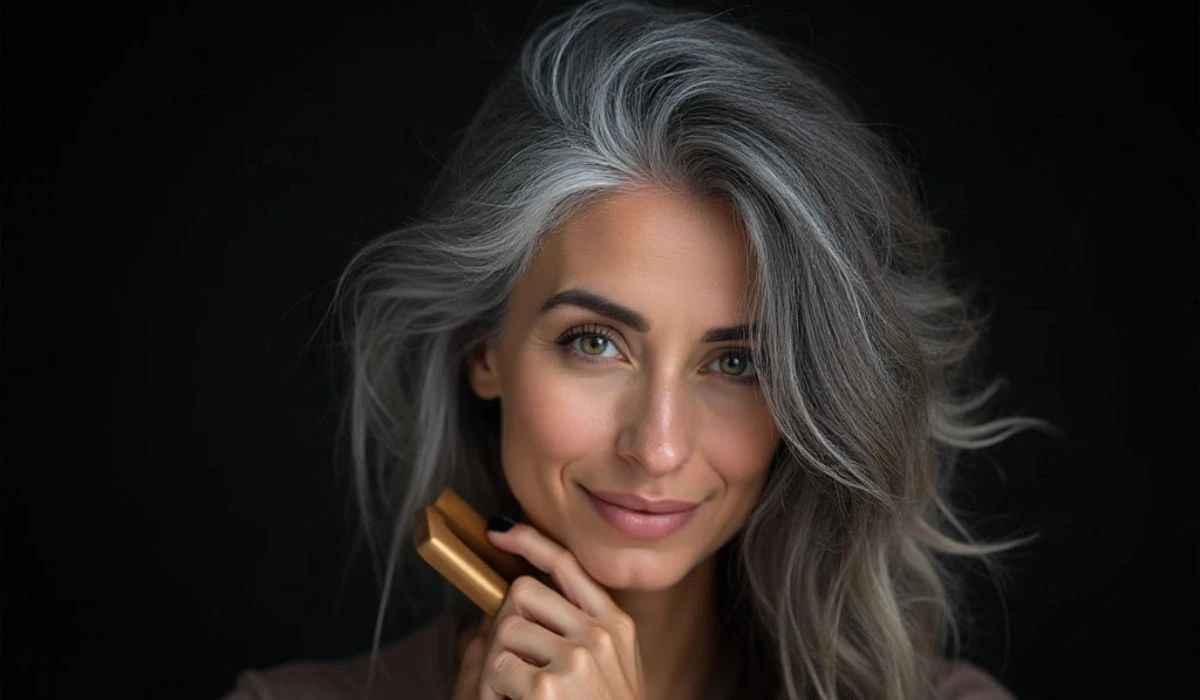Wellhealthorganic.com: Know the Causes of White Hair and Easy Ways to Prevent It Naturally
White or gray hair is often seen as a normal sign of aging, but many people worry when they notice it appearing earlier than expected. On WellHealthOrganic, we believe in understanding the root causes of changes in your body—and using natural, evidence-based strategies to support your health. In this article, we’ll explore why hair turns white, what factors contribute to premature whitening, and practical, natural ways you can slow or mitigate the process.
What Causes Hair to Turn White?
To know how to prevent or slow white hair, it’s essential to understand what changes inside your body lead to loss of hair pigmentation. Here are the main biological and environmental causes:
1. Decreased Melanin Production
Hair gets its color from melanin, the pigment produced by melanocytes (pigment cells) in hair follicles. Over time, these cells become less active or gradually die off, reducing melanin and causing hair to emerge white or gray.
Once a hair strand emerges with no pigment, it generally does not regain color, so preventing further depigmentation is key.
2. Genetics and Aging
Your genes play a dominant role in when and how your hair begins to turn white. If your parents experienced early whitening, you are more likely to experience it too.
Aging is the natural driver of this process: as years pass, the cumulative effect of cell wear, oxidative stress, and reduced regenerative capacity gradually diminishes pigment production.
3. Oxidative Stress & Free Radicals
One strong hypothesis is that oxidative stress—the imbalance between free radicals and antioxidants in the body—damages the pigment-producing cells. When free radicals overwhelm the body’s defenses, melanocyte damage or dysfunction can follow.
4. Vitamin & Mineral Deficiencies
Certain nutrients are pivotal for healthy pigmentation. Deficiencies in:
- Vitamin B12
- Copper
- Iron
- Folic acid
- Zinc
- Vitamin D
have been linked in studies to premature hair whitening. When levels are low, melanin synthesis may be impaired.
In fact, the relationship between low serum copper and premature graying has been documented in clinical research.
5. Hormonal & Thyroid Imbalances
Thyroid disorders (both hypo- and hyperthyroidism) can influence hair pigmentation by interfering with melanocyte activity.
Hormonal changes more broadly may also affect hair health and capacity to maintain pigment.
6. Smoking, Alcohol & Pollution
- Smoking has been strongly associated with premature graying. The oxidative and toxic effects of nicotine and other compounds may accelerate melanocyte damage.
- Alcohol, especially heavy use, contributes to systemic stress and may indirectly influence hair health.
- Environmental pollution & UV exposure generate free radicals that damage hair follicles and pigment cells.
7. Stress & the “Fight-or-Flight” Response
There is growing evidence that chronic stress may accelerate the depletion of pigment-producing stem cells. In experiments on animal models, stress has been shown to lead to loss of hair pigmentation via overactivation of sympathetic nerve pathways and depletion of melanocyte precursor cells.
While direct evidence in humans is less conclusive, such findings suggest that managing how your body responds to stress may influence how quickly white hairs appear.
8. Underlying Medical Conditions & Medications
Some medical conditions and medications can accelerate hair whitening:
- Autoimmune disorders, such as vitiligo, where the immune system attacks pigment cells.
- Chemotherapy and certain drugs that affect cell division and melanocyte function,
- Chronic illnesses that compromise nutrient absorption, protein metabolism, or hormonal balance.
Can You Prevent or Reverse White Hair Naturally?
Genetic factors and aging play a significant role in determining whether or not white hair can be prevented or reversed. However, in many cases—especially when factors like deficiencies or oxidative stress play a role—you can take steps to slow progression or possibly restore some pigment.
Let’s look at some practical, natural strategies:
1. Optimize Nutrition & Supplement Wisely
- Boost intake of B-vitamins, especially B12 and folate
- Ensure adequate copper, iron, zinc, and vitamin D levels
- Eat antioxidant-rich foods (berries, dark leafy greens, nuts) to reduce oxidative stress
Before taking supplements, it’s wise to check your blood levels and consult a healthcare provider.
2. Quit Smoking & Reduce Alcohol Consumption
Eliminating harmful habits like smoking can reduce added oxidative stress on hair follicles.
Limiting alcohol—especially binge drinking—can help maintain overall cellular health and pigment integrity.
3. Manage Stress Consistently
Adopt stress-reduction practices such as:
- Meditation or mindfulness
- Yoga or tai chi
- Adequate sleep
- Leisure activities and hobbies
Reducing chronic stress may help slow pigment loss from hair follicles.
4. Use Gentle Hair Care & Protect from UV
- Avoid harsh chemical treatments, frequent bleaching, or overuse of hair dyes.
- Use sunscreen spray for scalp or wear a hat to block UV damage.
- Choose gentle, sulfate-free shampoos and avoid extreme heat styling.
5. Traditional & Herbal Remedies (with Caution)
Though clinical evidence is limited, many cultures use herbal remedies to support hair health. Some include:
- Amla (Indian gooseberry): Rich in antioxidants, often used as oil or juice.
- Curry leaves + oil: Often recommended in traditional medicine for hair pigmentation.
- Bhringraj (false daisy): Used in Ayurvedic treatments.
- Black sesame seeds or blackstrap molasses: Sometimes suggested for pigment support.
These approaches may offer some support but are no guarantee. Use them carefully, and always check for allergies or interactions.
6. Support Thyroid & Hormonal Health
If you suspect a thyroid or hormonal issue, get medical evaluation. Treating any imbalance may help maintain pigment production in hair follicles.
7. Regular Health Check-Ups & Early Intervention
Since white hair can signify underlying conditions, monitor your health regularly (nutrient blood tests, thyroid panels, autoimmune screening) especially if whitening is happening at a younger age than expected.
What to Do If White Hair Has Already Appeared
- Accept & Embrace — Many people choose to celebrate their natural hair, especially as white and gray hair has become a fashion trend.
- Hair Dyes (Natural Options) — If you prefer covering white strands, use gentler alternatives like henna, plant-based dyes, or low-chemical, semi-permanent formulas.
- Gentle Maintenance — Use nourishing, sulfate-free shampoos, regular scalp massage, and UV protection to preserve hair health.
Sample Daily Routine for Supporting Natural Pigmentation
Here is a sample daily approach you might adopt to help maintain hair color and health:
| Time | Activity |
| Morning | Eat antioxidant-rich breakfast (berries, greens) |
| Midday | Sunlight exposure (vitamin D, circadian health) |
| Throughout day | Hydrate well, avoid smoking and heavy alcohol |
| Evening | Gentle dinner with iron, copper-rich foods |
| Pre-bed | Meditate or relax to reduce stress |
| Once or twice per week | Apply herbal oil (e.g. amla or curry leaf mixture) |
| Weekly | Use mild, nourishing shampoo; avoid bleach or harsh dyes |
Final Thoughts
White hair is often part of the aging process and influenced heavily by genetics, but it’s not devoid of hope. Many people can slow its onset or support healthy hair pigmentation through smart, natural practices—especially when modifiable factors like diet, stress, and environmental damage are addressed.
Our mission at WellHealthOrganic is to empower people through knowledge so that they can take action. By knowing why hair turns white, you can make informed choices to support your body. While no method is guaranteed to reverse all white hairs, combining good nutrition, lifestyle choices, gentle hair care, and medical oversight offers the best chance at preserving pigment longer.






